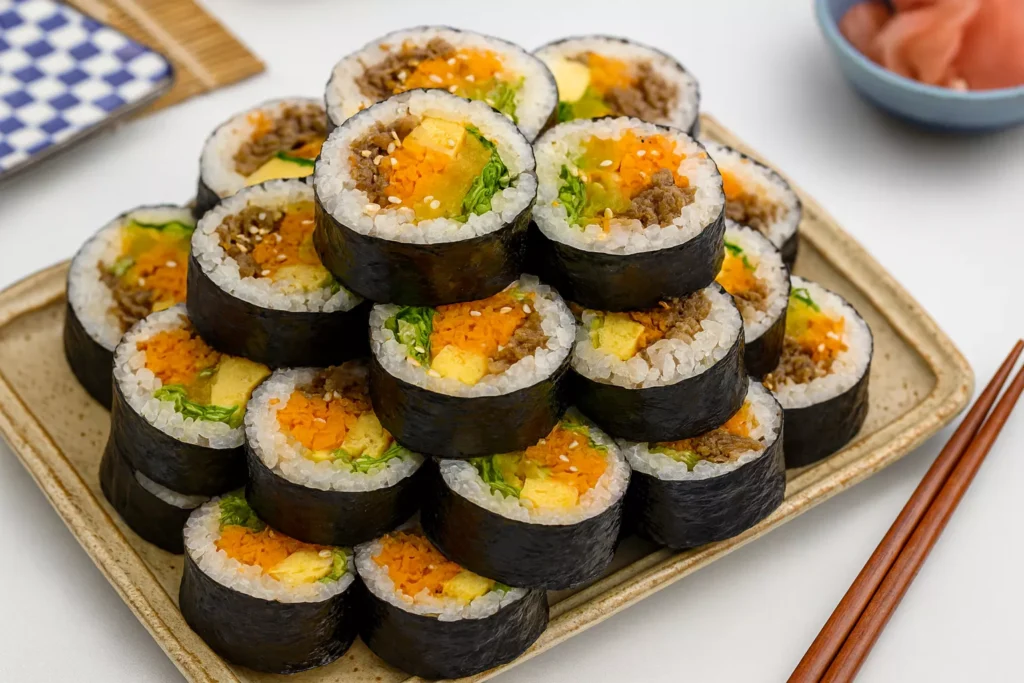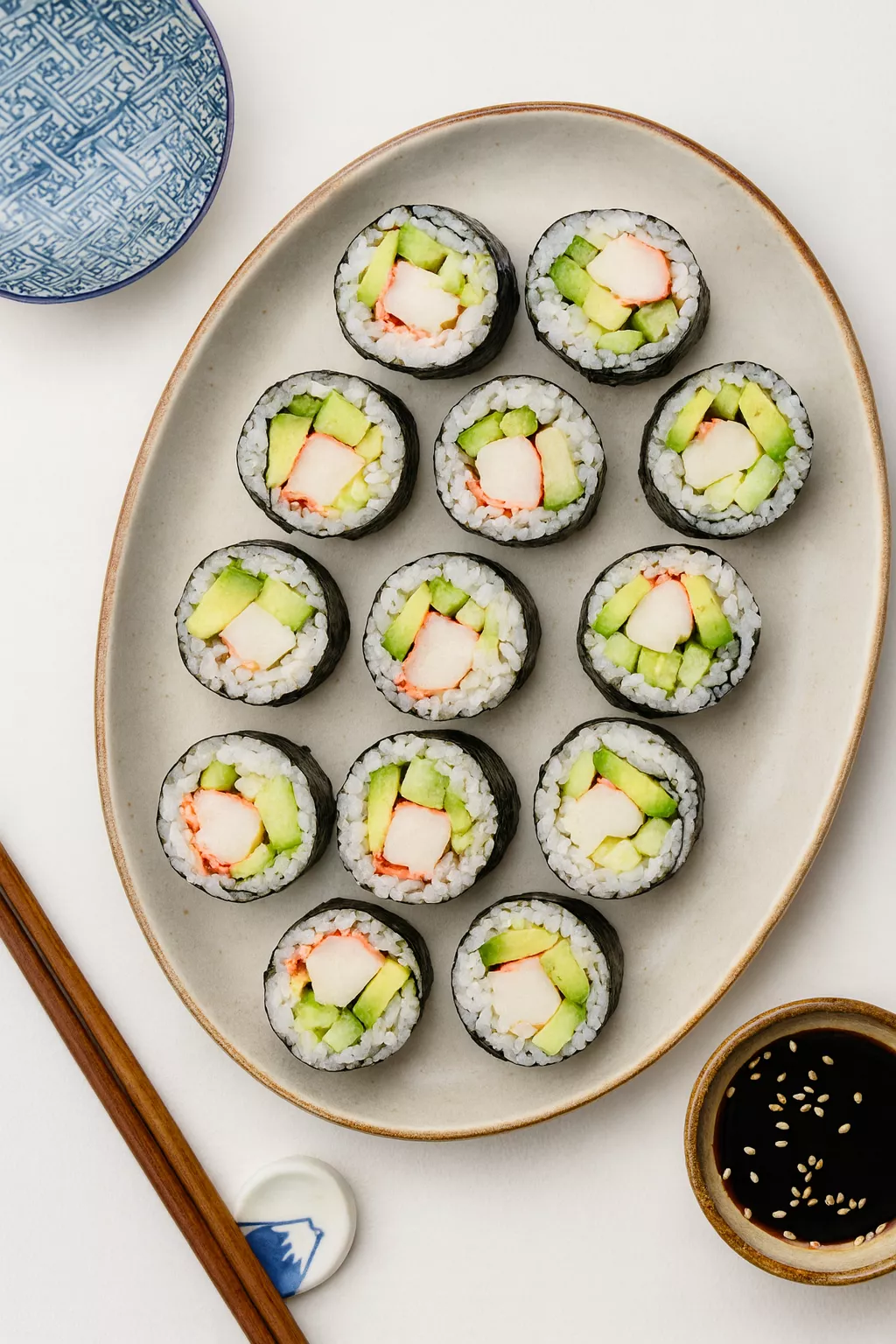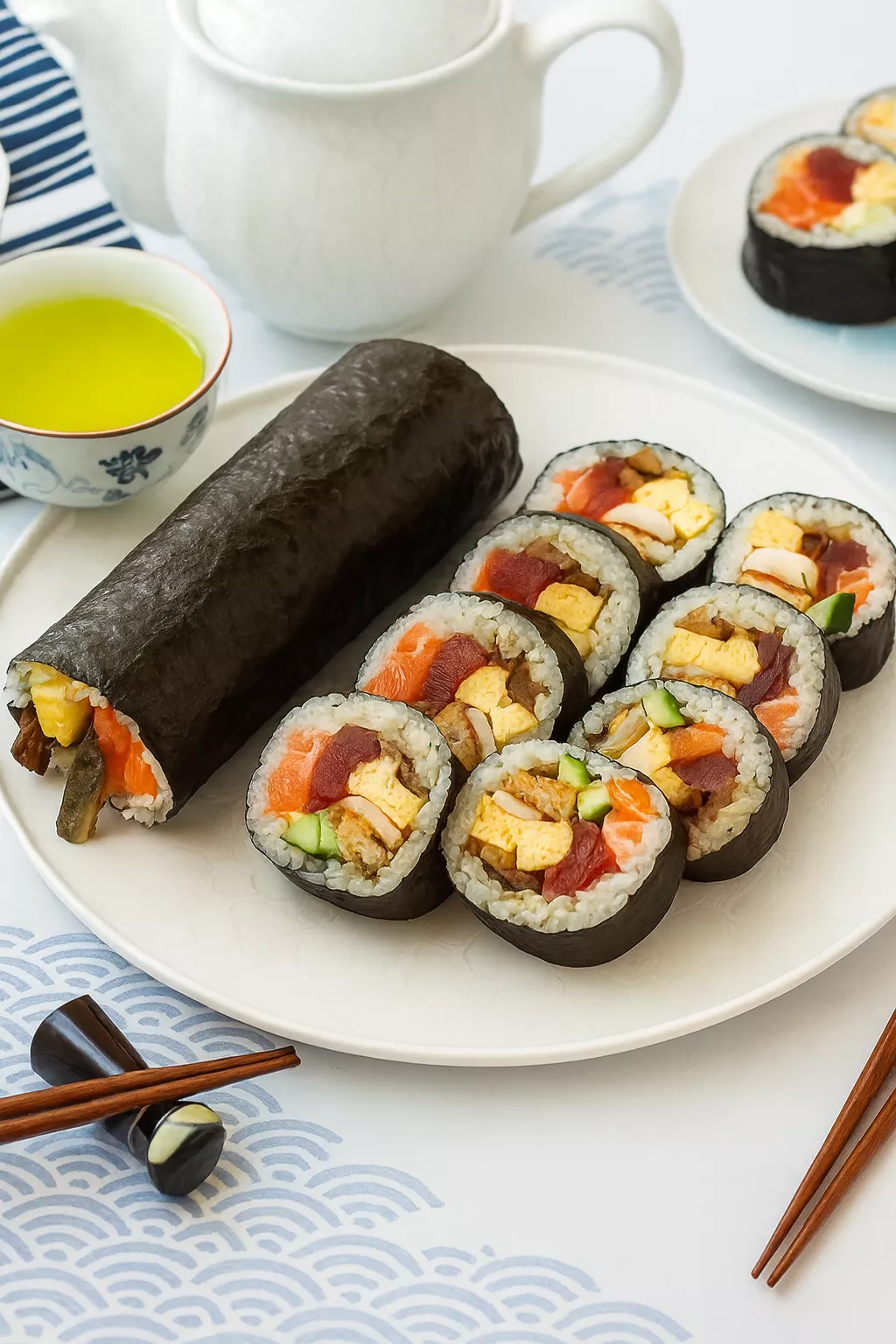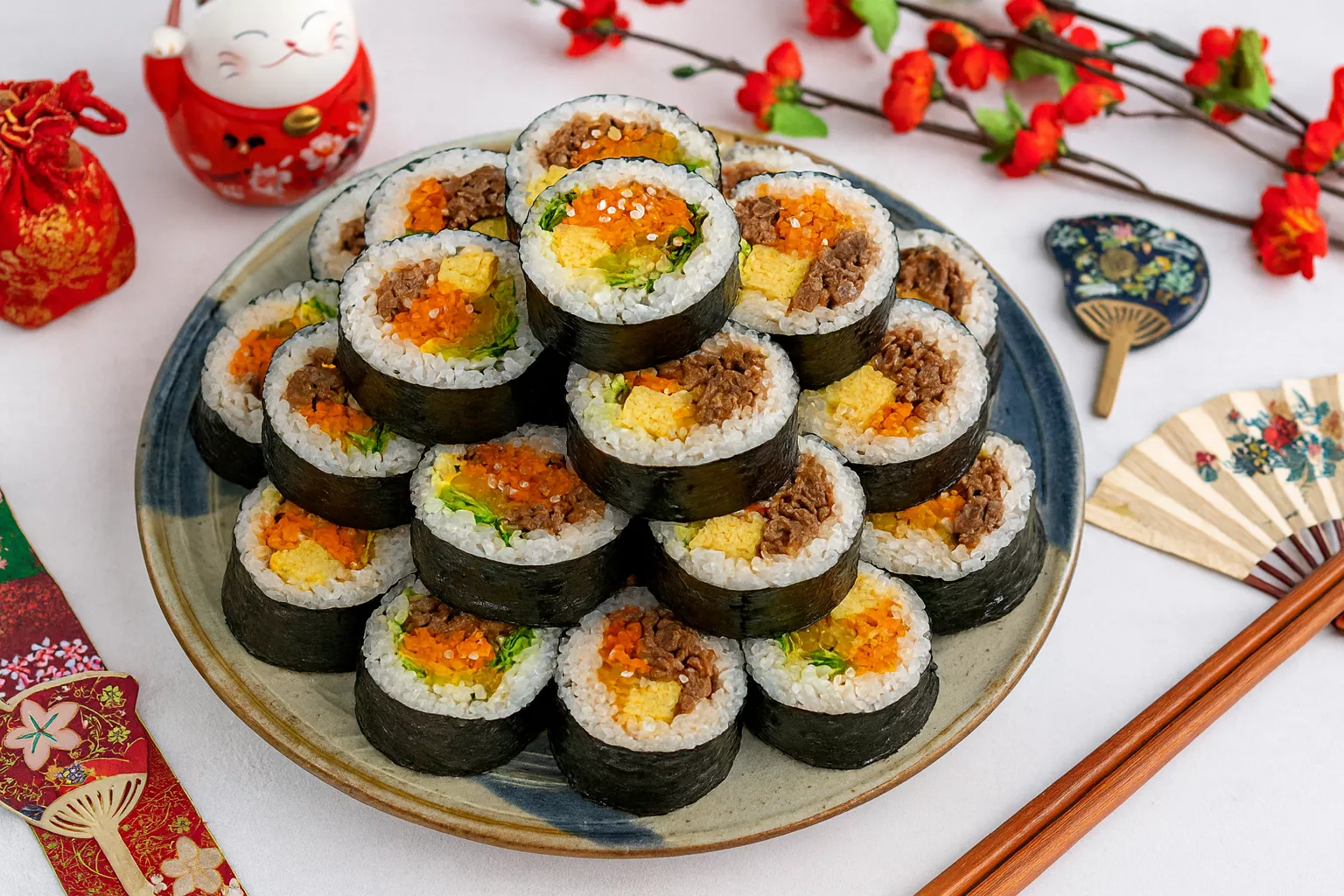Have you ever looked at sushi and wondered, “Is there something similar but with a Korean twist?” If so, you’re about to discover one of the most colorful and satisfying Korean dishes kimbap (キンパ). While it looks like Japanese sushi, it has its own flavors, ingredients, and personality that make it truly special.
Kimbap is often called “Korean sushi,” but once you taste it, you’ll realize it’s something completely different. The rice is seasoned with sesame oil instead of vinegar, the fillings are vibrant and hearty, and the rolls are perfect for picnics, lunch boxes, or light dinners. Whether you’re a beginner in cooking or someone looking to expand your Asian recipe list, this guide will help you make perfect kimbap (キンパ) at home — step by step.
What Makes Kimbap (キンパ) Special
Kimbap (キンパ) is a Korean seaweed rice roll filled with rice, vegetables, eggs, and sometimes meat or seafood. The name comes from “kim” (seaweed) and “bap” (rice). It’s beautifully simple yet incredibly flavorful.
What makes this recipe shine is the balance of textures and colors — crunchy carrots, sweet and tangy pickled radish, soft tamagoyaki (rolled omelet), and savory marinated beef all wrapped together in roasted seaweed.
- Time required: Around 45 minutes
- Difficulty level: Easy to medium
- Best for: Lunchboxes, picnics, light dinners, or party platters
Unlike sushi, kimbap doesn’t use raw fish. Instead, it’s filled with cooked ingredients, making it family-friendly and safe to prepare ahead of time. The sesame oil adds a nutty aroma that gives each bite a comforting warmth unique to Korean home cooking.
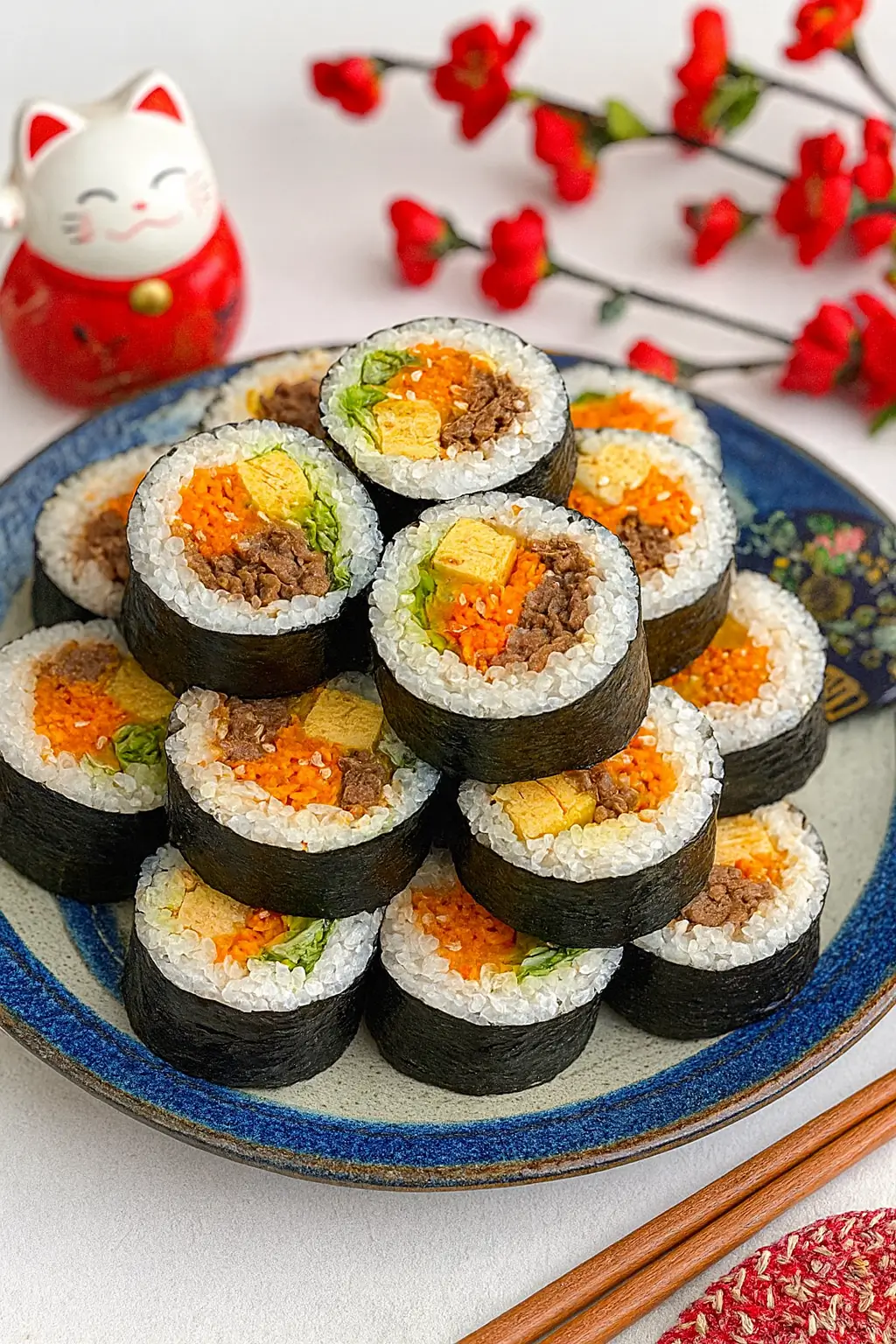
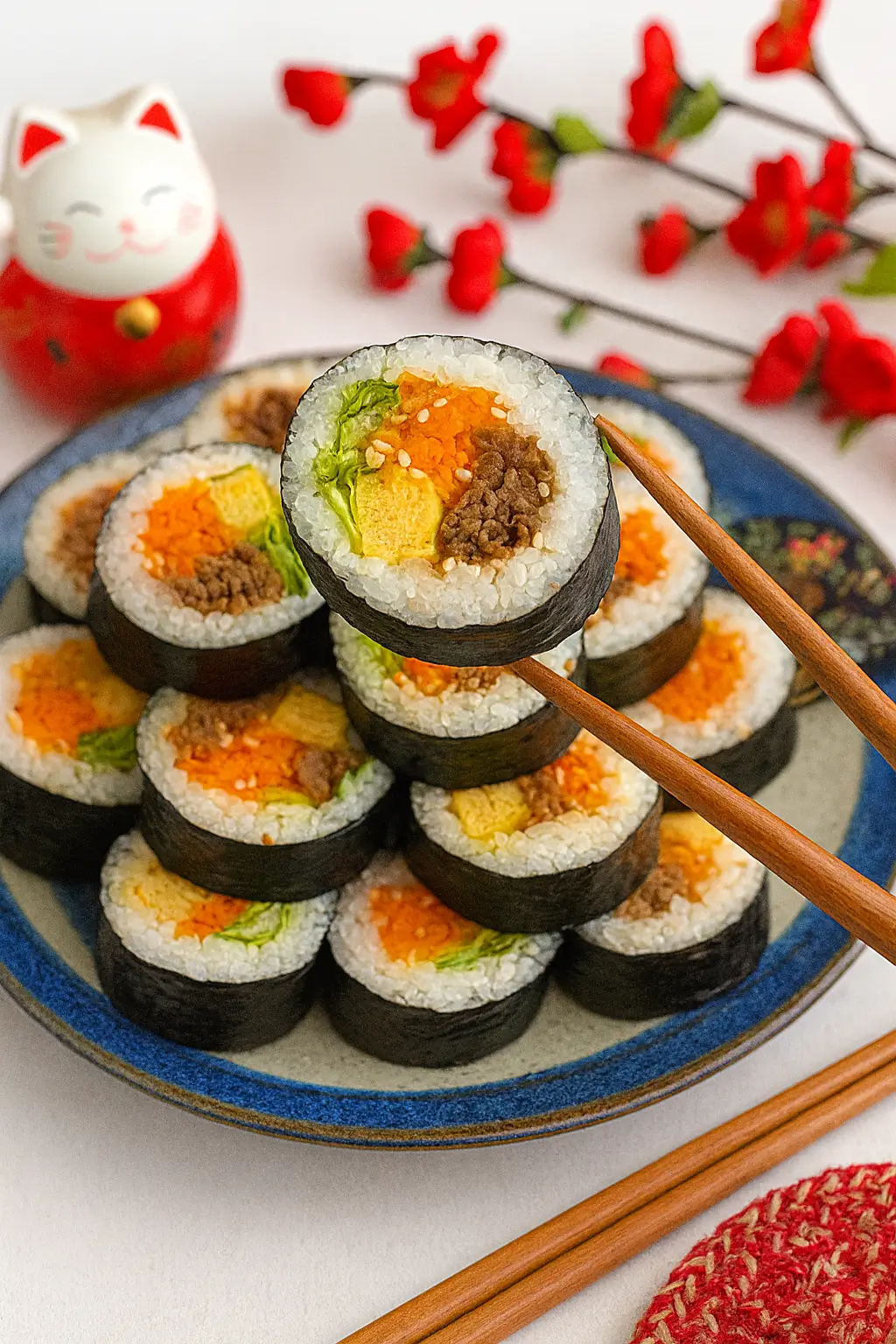
What Is Kimbap (キンパ)?
Kimbap is one of Korea’s most beloved everyday foods — a staple at family outings, school lunches, and even street stalls. While its appearance resembles Japanese sushi rolls (maki), the flavor profile is entirely different. The rice is seasoned with sesame oil and salt rather than rice vinegar, giving it a subtle nutty fragrance.
Traditionally, kimbap can be filled with various ingredients like spinach, fish cakes, bulgogi (Korean BBQ beef), carrots, pickled radish, and eggs. There’s no single “correct” filling — creativity is part of its charm.
In Japan, kimbap (キンパ) has become increasingly popular for its visual appeal and mild flavor. It’s now found in convenience stores, Korean restaurants, and homemade lunchboxes (bento) alike.
Essential Ingredients for Kimbap (キンパ)
Here’s everything you’ll need to make delicious and authentic kimbap at home.
Main Ingredients
- Rice – 600g
Use freshly cooked short-grain rice. It’s slightly sticky and holds together well when rolled. Mix with ½ teaspoon of salt while it’s still warm. - Roasted Seaweed (Nori) – 4 sheets
These will hold the roll together. Korean-style roasted seaweed sheets have a toasty flavor and are thinner than Japanese ones. - Carrot – 1 small stick (about 150g)
Adds a crunchy and slightly sweet note. - Pickled Radish – 80–90g
Known as danmuji, this yellow pickled radish gives a sweet and tangy balance to the roll. - Lettuce – 2–3 sheets
Adds freshness and a slight crunch. - Tamagoyaki (rolled omelet) – 1 stick (made with 3 eggs)
Soft and slightly sweet, it balances the saltiness of the meat. - Korean-style BBQ beef – 200g
Adds protein and a deep umami flavor to each bite. - Sesame Oil – 1 teaspoon (for carrots)
For extra aroma and smoothness.
Ingredient Notes and Substitutions
- Rice substitute: You can use sushi rice or any short-grain rice. Brown rice also works for a healthier version.
- Vegetable options: Add spinach, cucumber, or bell peppers for color and texture.
- Protein options: Swap the BBQ beef for tuna, crab sticks, or tofu for a vegetarian twist.
- Pickled radish substitute: If unavailable, try sweet pickles or thinly sliced cucumber marinated in rice vinegar and sugar.
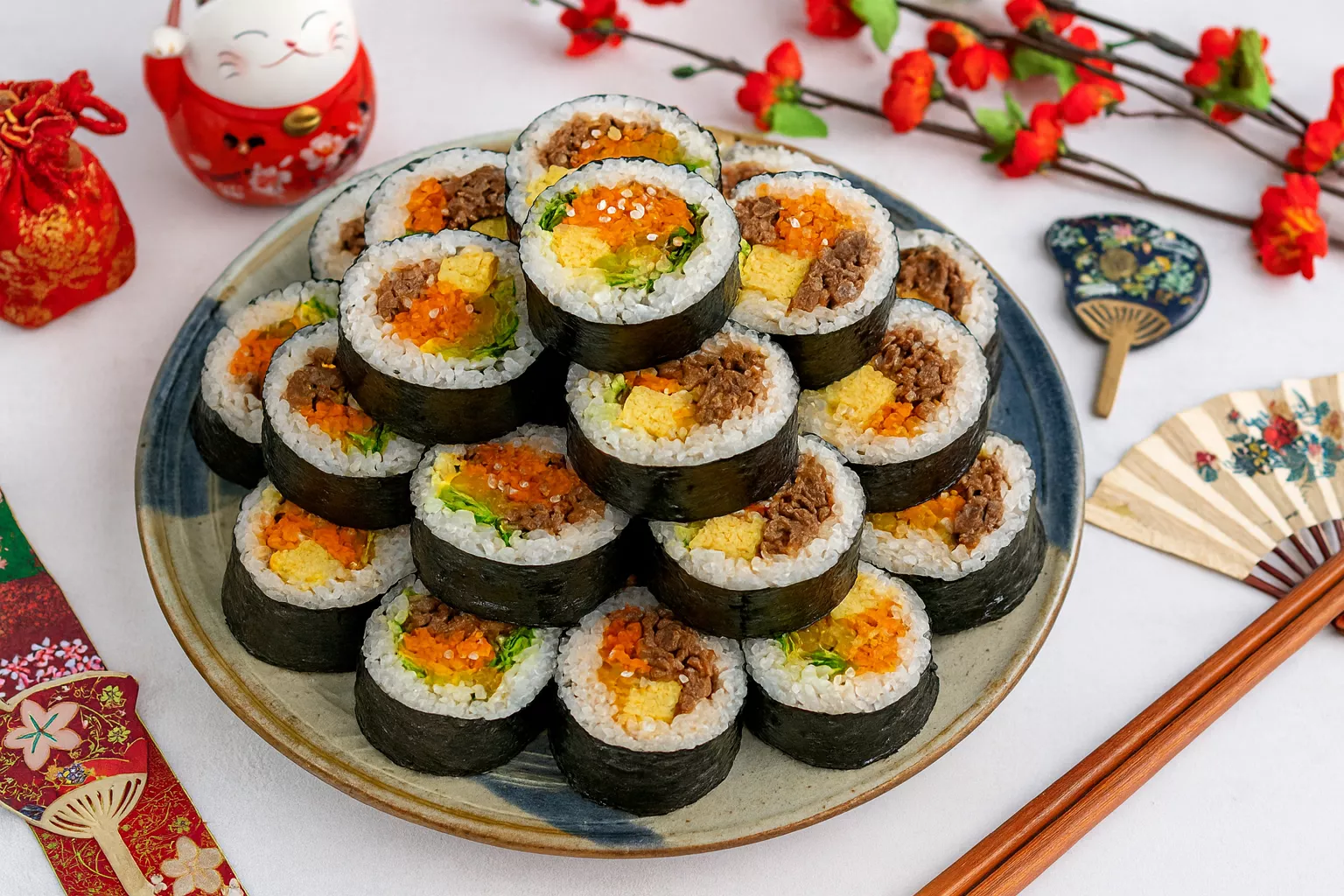
Step-by-Step Instructions: How to Make Kimbap (キンパ)
Step 1: Prepare the Carrots
Slice one small carrot diagonally, then cut into thin strips. Sprinkle ½ teaspoon of salt and let sit for 10 minutes. Drain the water that comes out, then mix with 1 teaspoon of sesame oil. This step enhances the carrot’s flavor and makes it tender.
Step 2: Prepare the Pickled Radish and Lettuce
Slice the pickled radish and lettuce into long, thin strips that will fit neatly into your roll. Keep them ready on a plate.
Step 3: Make the Tamagoyaki (Rolled Omelet)
Beat 3 eggs in a bowl. Add 2 teaspoons of white dashi and 2 teaspoons of sugar. Cook in a small rectangular pan if available (or a round one) over low heat, rolling the layers gradually to form a log-shaped omelet. Let it cool slightly, then cut it into long, thin strips.
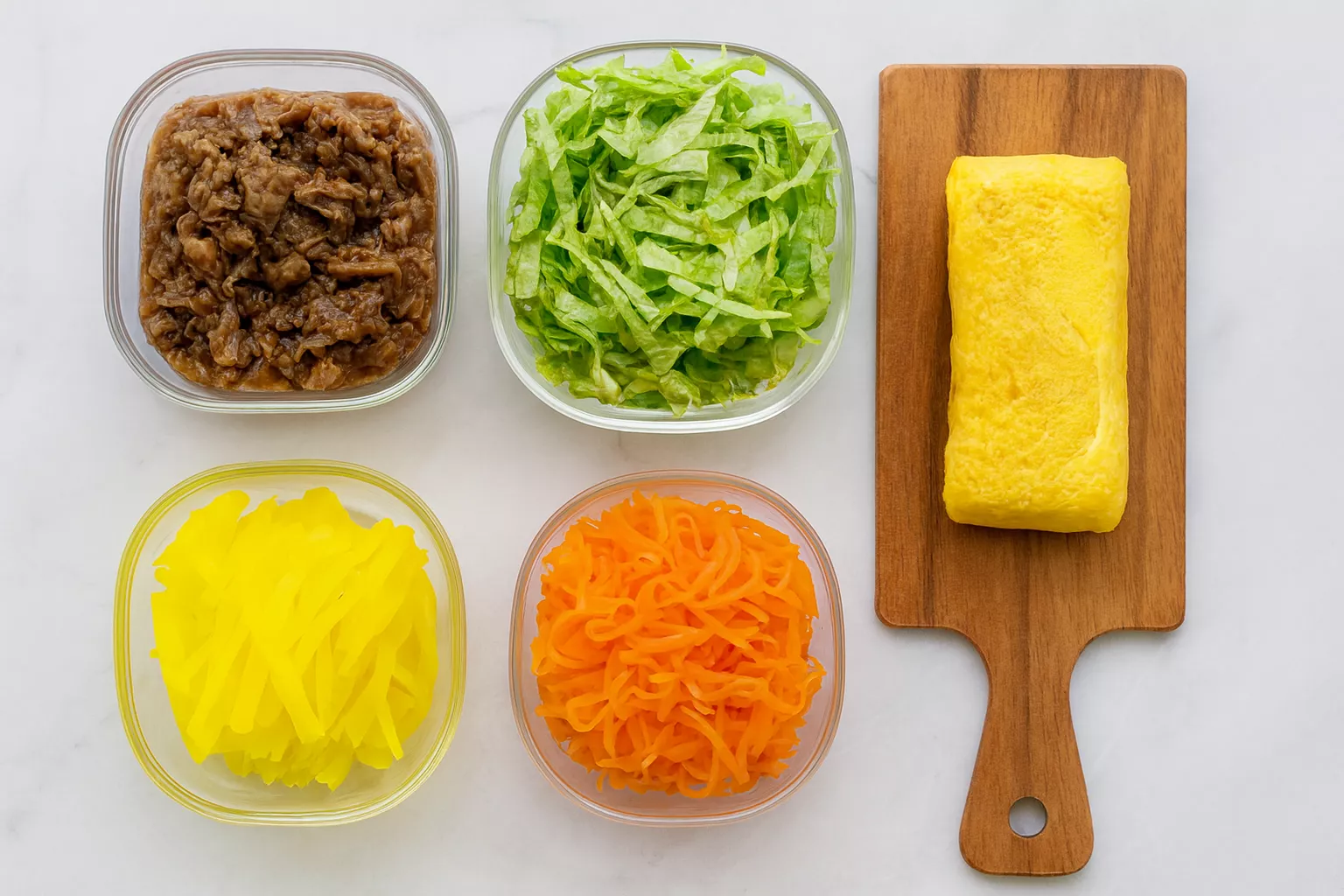
Step 4: Prepare the Korean-style BBQ Beef
You can use ready-made Korean BBQ beef or make it from scratch. Prepare 200g Korean-style BBQ beef. You can use ready-made bulgogi or make it at home using soy sauce, sugar, sesame oil, and garlic. Cook until browned and set aside.
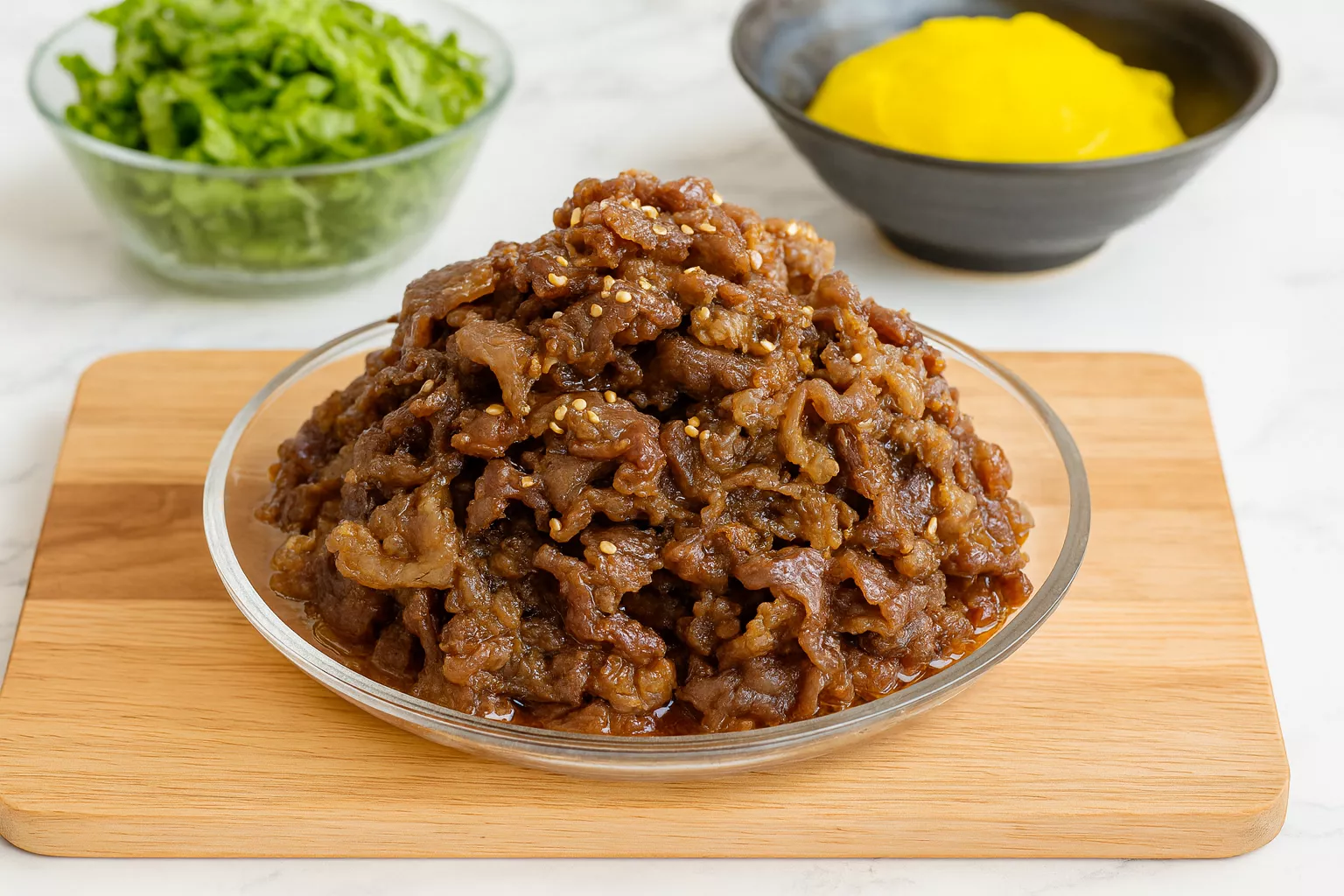
Step 5: Season the Rice
Mix 600g of warm rice with ½ teaspoon of salt. This simple seasoning helps the rice complement the fillings without overpowering them.
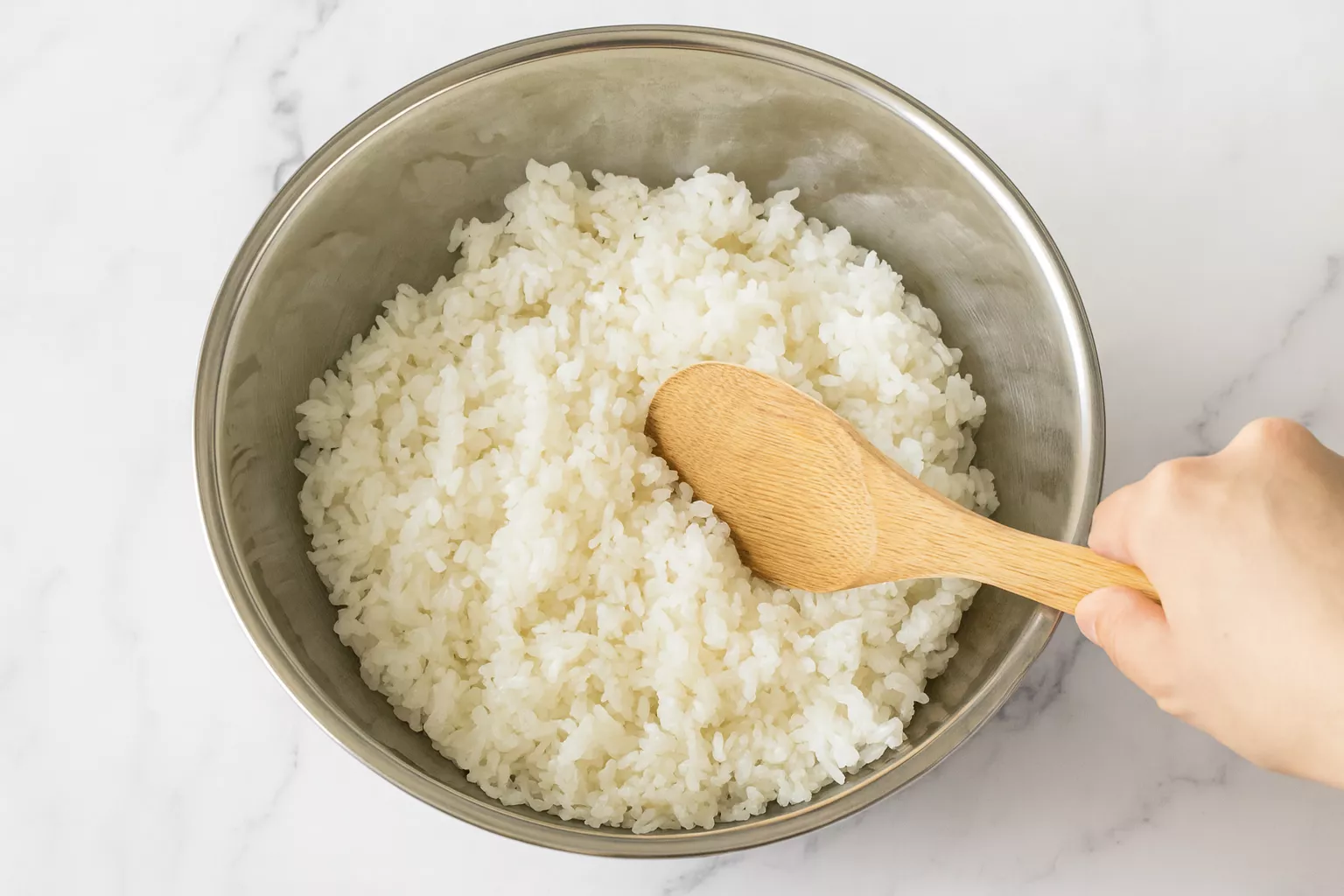
Step 6: Set Up the Rolling Station
Place a bamboo sushi mat (makisu) on a clean surface. Lay one sheet of roasted seaweed shiny side down on the mat. Spread about 150g of rice evenly, leaving 2–3 cm at the top edge uncovered.
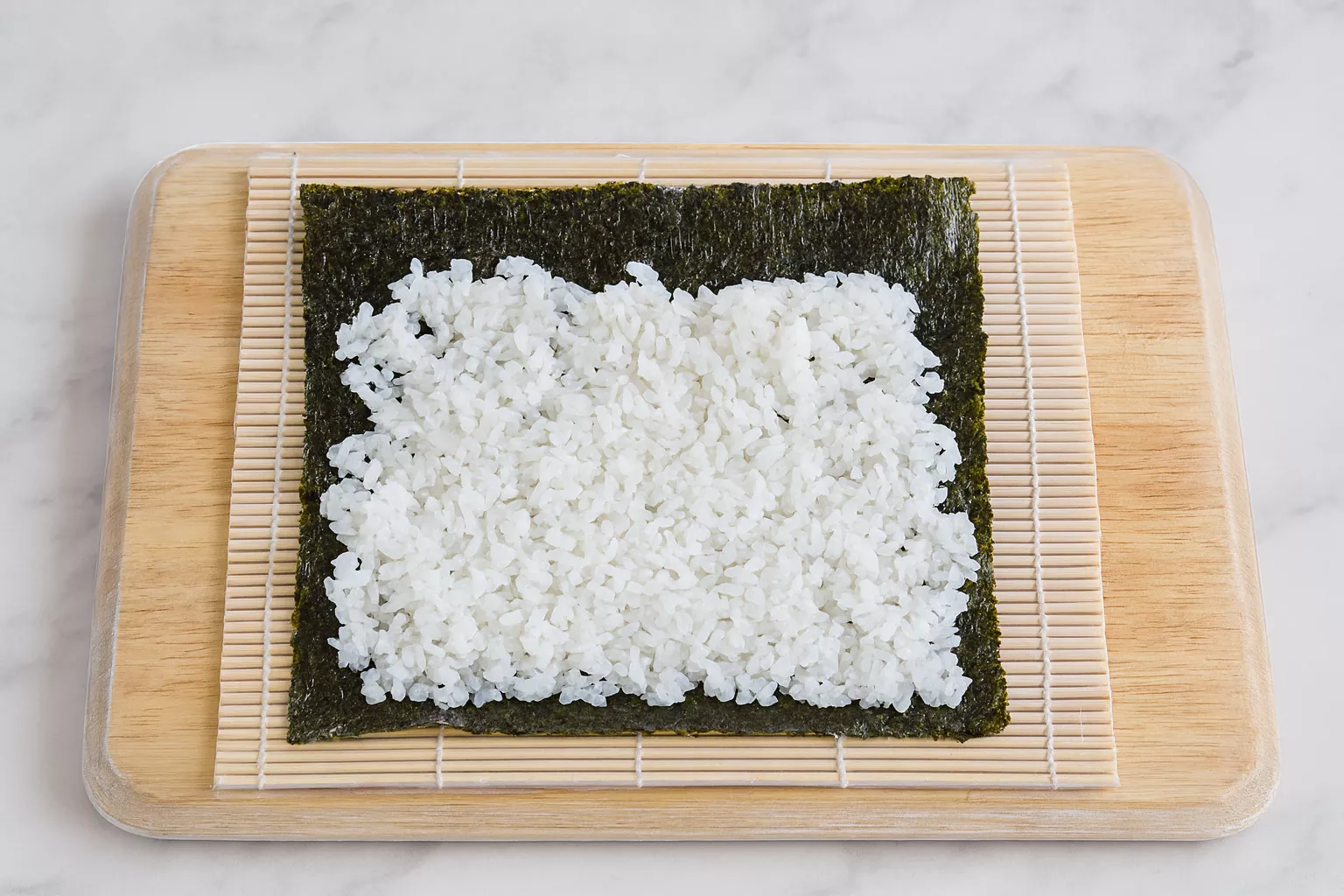
Assembly: Rolling the Kimbap (キンパ)
Step 1: Add the Fillings
Place the lettuce in the center of the rice, followed by carrots, pickled radish, tamagoyaki strips, and BBQ beef. Try to layer them evenly for a balanced flavor in every bite.
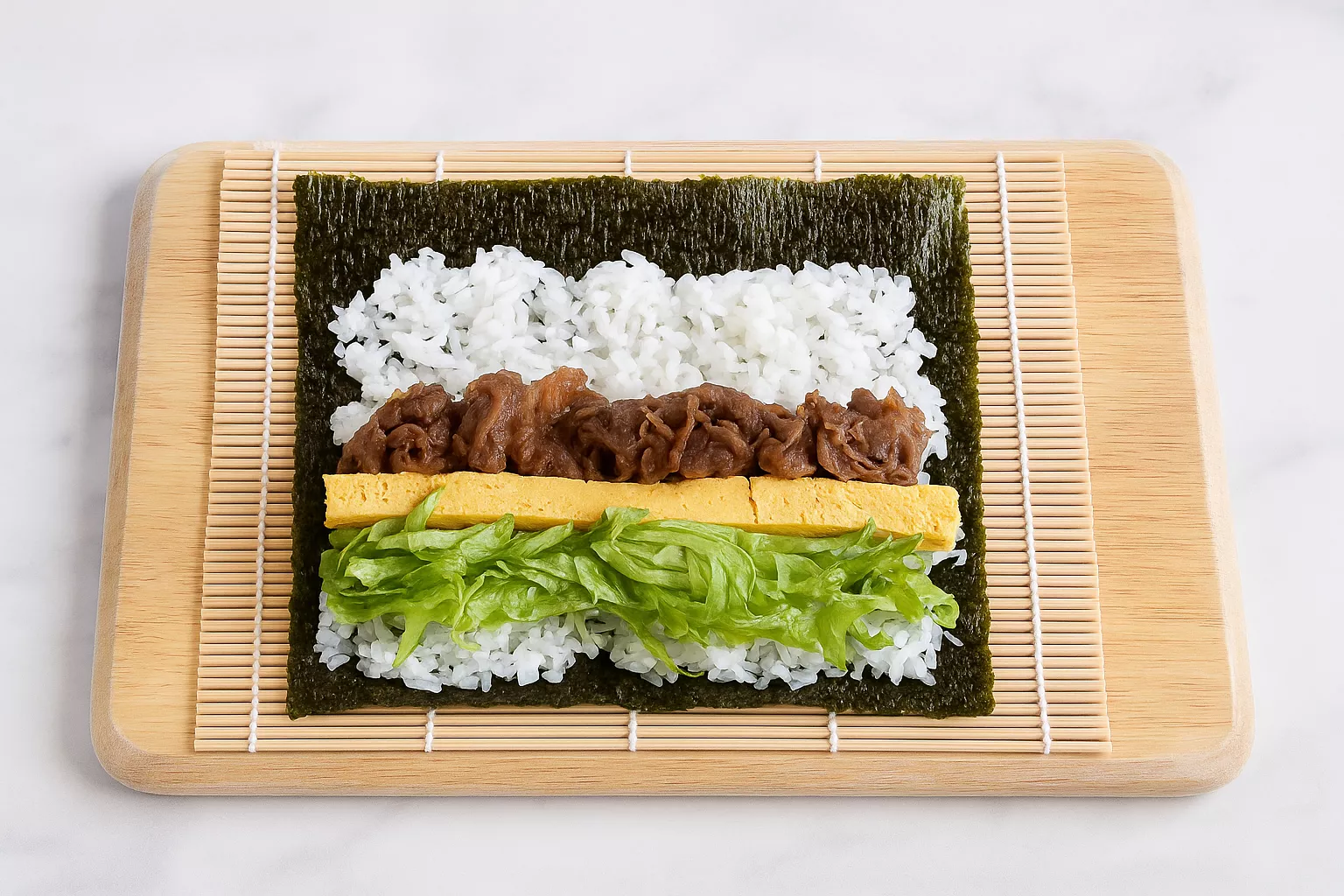
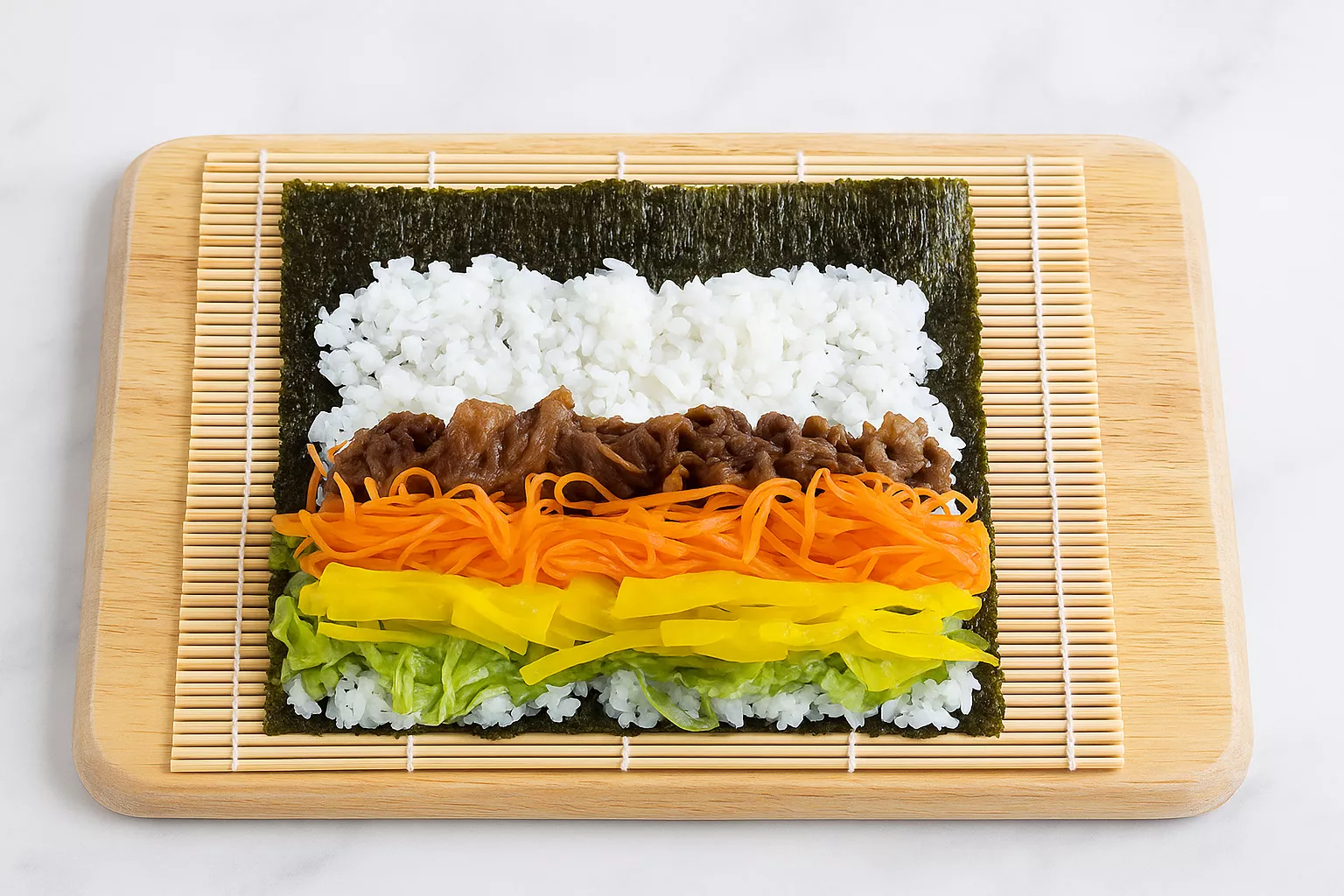
Step 2: Start Rolling
Using both hands, lift the edge of the bamboo mat closest to you and roll it forward, pressing gently but firmly to form a tight roll.
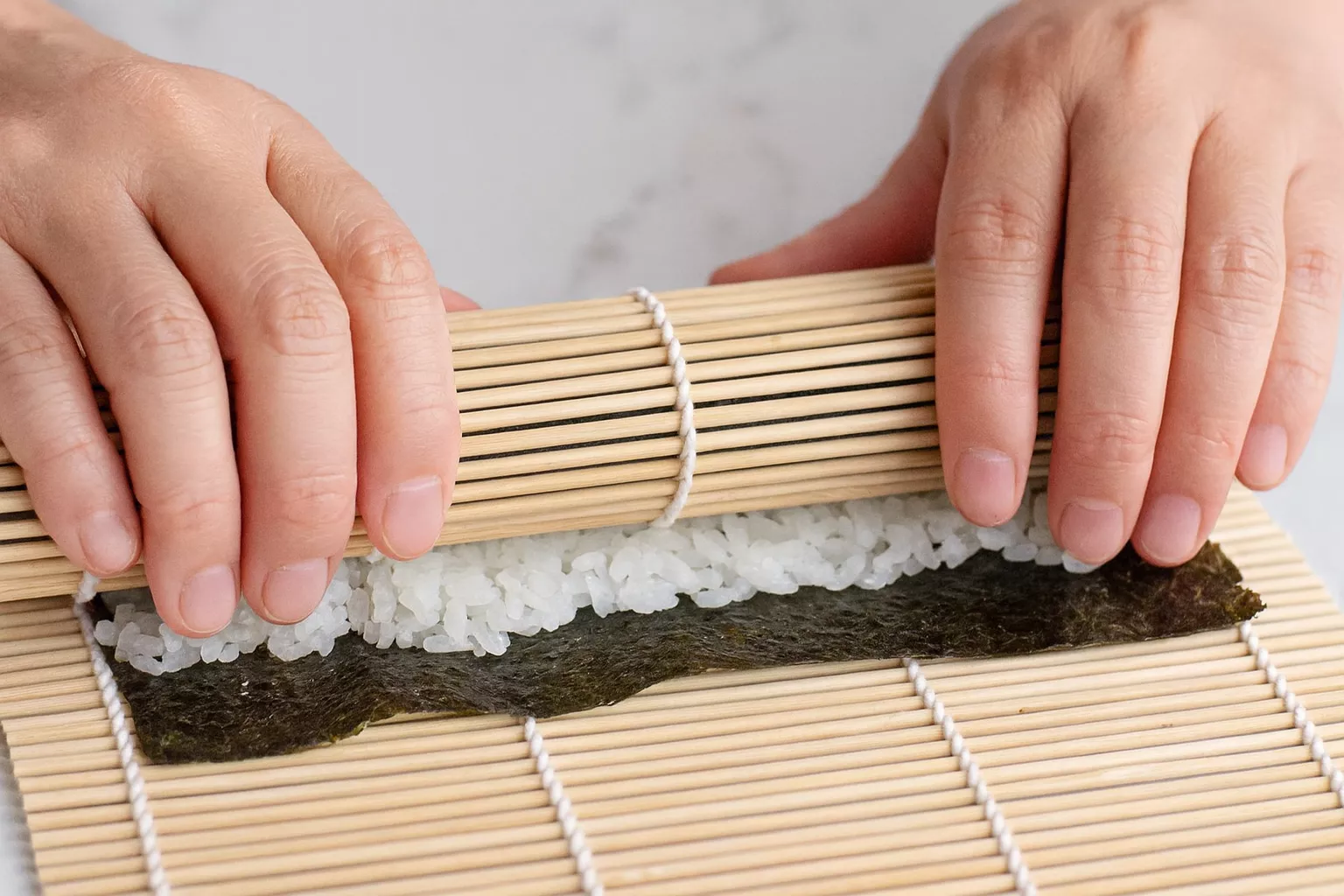
Once the roll is complete, place it seam-side down to help it seal.
Step 3: Slice and Serve
Before cutting, wipe your knife with a damp paper towel. Slice the kimbap into even pieces, cleaning the blade after each cut for smooth edges.
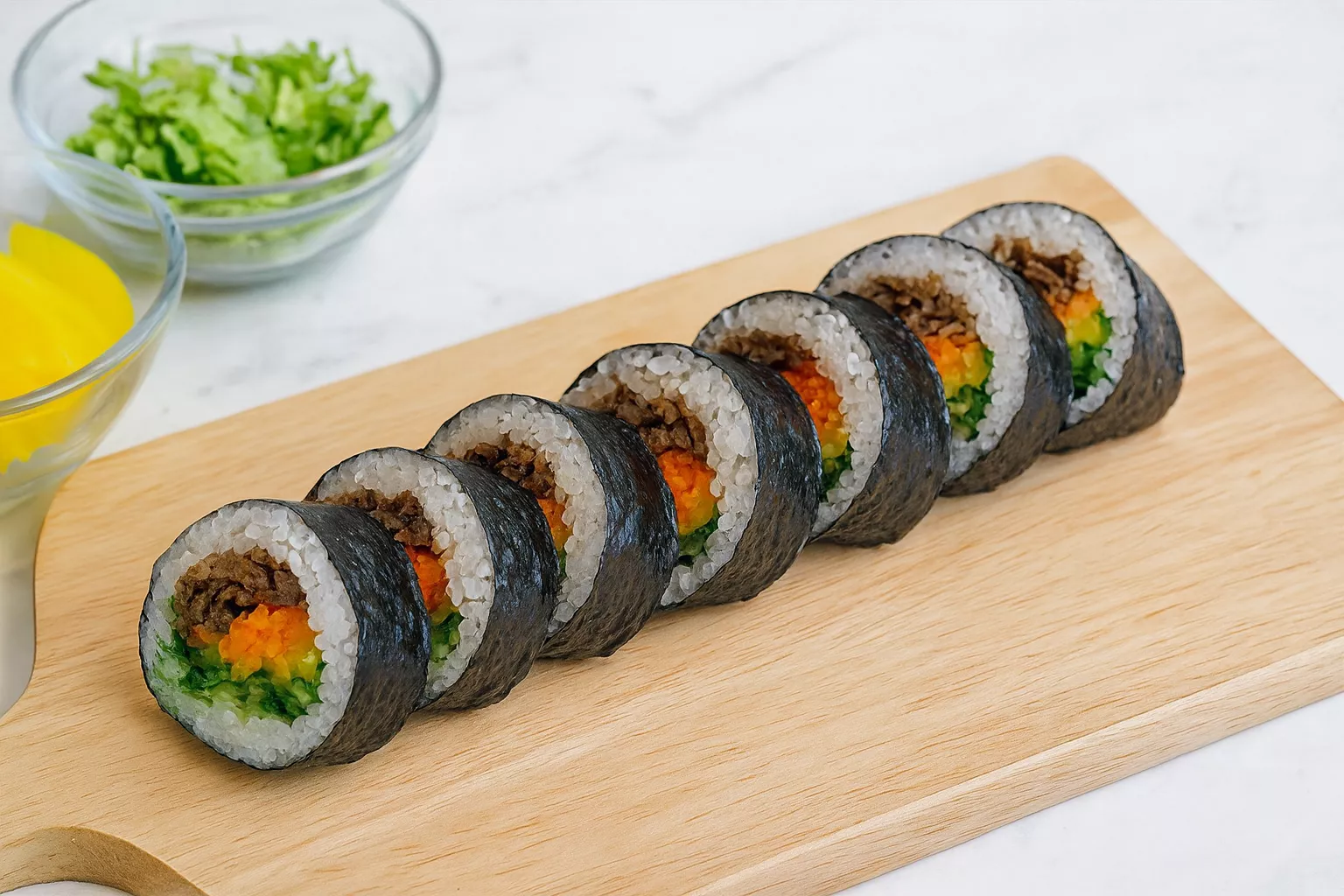
Arrange the slices on a plate and sprinkle roasted sesame seeds on top for a final touch.
Secrets to Success and Expert Tips
- Don’t overfill: It may be tempting to add more ingredients, but too much will make rolling difficult.
- Use warm rice: Cold rice is hard to spread and can cause the seaweed to tear.
- Tight rolling matters: Gentle pressure helps keep the roll firm without squashing it.
- Keep ingredients dry: Too much moisture can make the seaweed soggy.
- Use a sharp knife: Always wipe it between cuts to prevent sticking.
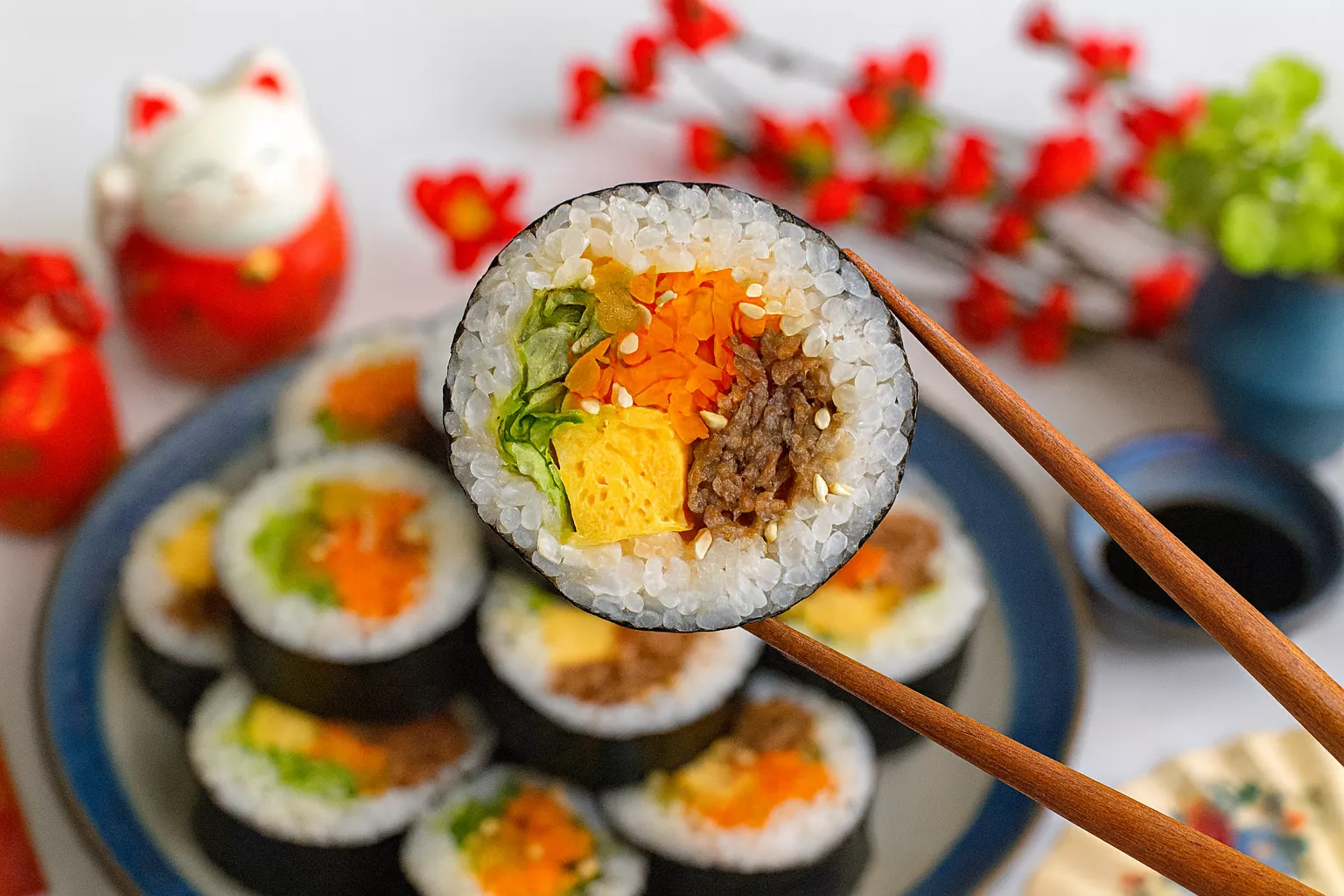
Hana’s Recipe Tips
- Flavor balance: Combine sweet (tamagoyaki), tangy (radish), and savory (beef) elements for the best taste.
- For vegetarians: Replace the beef with sautéed mushrooms or seasoned tofu.
- Make it colorful: Use red bell peppers, spinach, or purple cabbage for a rainbow-style roll.
- Serving ideas: Serve with kimchi, miso soup, or a small side salad for a complete meal.
Hana’s final secret? Brush the outside of the roll lightly with sesame oil before slicing — it adds shine, flavor, and prevents the seaweed from cracking.
Storage and Make-Ahead Tips
Kimbap (キンパ) is best enjoyed fresh, but you can make it ahead with these storage tips:
- Short-term storage: Wrap the rolls tightly in plastic wrap and store in the refrigerator for up to 24 hours.
- Reheating: Let refrigerated kimbap sit at room temperature for 15–20 minutes before eating.
- Avoid microwaving: It softens the seaweed and changes the texture.
- Freezing: Not recommended, as the rice becomes dry and grainy after thawing.
For busy mornings, you can prepare the fillings (carrots, tamagoyaki, BBQ beef) the night before and assemble the rolls just before serving.
Recipe Variations
Kimbap is highly versatile — here are some creative ideas you can try:
- Vegetarian Kimbap: Replace meat with sautéed spinach, tofu, or avocado slices.
- Tuna Mayo Kimbap: Mix canned tuna with mayonnaise and salt, and add it as a creamy filling.
- Spicy Kimbap: Add kimchi or gochujang sauce for a fiery kick.
- Cheese Kimbap: Melt a strip of cheese inside for a modern twist loved by kids.
- Japanese-Style Kimbap: Add crab sticks and cucumber for a flavor that bridges Korean and Japanese cuisine.
Each version keeps the spirit of kimbap — simple, colorful, and satisfying — while allowing you to personalize it.
Health Benefits of Kimbap (キンパ)
Kimbap is a well-balanced meal wrapped in one roll. Each ingredient offers its own set of health perks:
- Rice: Provides energy and satiety.
- Vegetables: Add fiber, vitamins, and antioxidants.
- Eggs and meat: Provide protein and essential nutrients.
- Seaweed: Contains iodine, iron, and calcium.
- Sesame oil: Supplies healthy fats and adds an antioxidant boost.
Together, these ingredients make kimbap a nutrient-rich, low-fat meal that’s both light and filling.
Related Recipes to Try
If you enjoyed this Kimbap (キンパ) recipe, you might also love these Japanese-inspired dishes:
And for travel lovers:
Conclusion
Kimbap (キンパ) is more than just a Korean rice roll — it’s a symbol of comfort, creativity, and sharing. Whether you’re packing lunch, preparing for a picnic, or introducing your family to Korean flavors, making kimbap at home is fun, easy, and rewarding.
Once you master the basic technique, you can play with endless combinations. Each roll tells your own story — colorful, flavorful, and full of joy.
So next time you want something homemade, healthy, and delicious, try making kimbap (キンパ). You might just find your new favorite recipe.
FAQs About Kimbap (キンパ)
1. What’s the difference between kimbap and sushi?
Kimbap uses sesame oil and salt in the rice, while sushi rice is seasoned with vinegar. Also, kimbap fillings are cooked, unlike sushi’s raw fish.
2. Can I make kimbap ahead of time?
Yes. You can make it the night before, but store it in plastic wrap to prevent dryness.
3. How long can kimbap last in the fridge?
Up to 24 hours, though it’s best eaten fresh.
4. Is kimbap healthy?
Yes. It’s low in fat, high in fiber and protein, and packed with vitamins from vegetables.
5. What can I serve with kimbap?
Kimbap pairs wonderfully with kimchi, miso soup, or a small bowl of ramen.
6. Can I use brown rice or quinoa instead of white rice?
Absolutely. Both are great alternatives for a healthier version, but ensure they’re sticky enough to hold together.
kimbap キンパ (Japanese-style)
Course: AppetizersCuisine: JapaneseDifficulty: Easy4
servings30
minutes15
minutes420
kcalKimbap (キンパ) is a colorful Korean rice roll filled with seasoned rice, vegetables, and egg — similar to sushi but with a sesame flavor twist. This Japanese-style version blends both Korean heartiness and Japanese presentation for a perfect homemade meal.
Ingredients
600g cooked short-grain rice
½ teaspoon salt
4 sheets roasted seaweed (nori)
200g Korean-style BBQ beef
1 small carrot (about 150g)
80–90g pickled radish (danmuji)
2–3 lettuce leaves
3 eggs (for omelet)
2 teaspoons white dashi (for omelet)
2 teaspoons sugar (for omelet)
1 teaspoon sesame oil (for carrots)
Roasted sesame seeds (for garnish)
Directions
- Step 1 – Prepare the Carrots
Slice the carrot diagonally, then cut into thin strips. Sprinkle ½ teaspoon salt and let sit for 10 minutes. Drain the moisture, then mix with 1 teaspoon sesame oil. - Step 2 – Prepare the Vegetables
Thinly slice the pickled radish and lettuce leaves into long strips. Set aside for later use. - Step 3 – Make the Tamagoyaki (Rolled Omelet)
Beat 3 eggs and mix in 2 teaspoons white dashi and 2 teaspoons sugar. Cook slowly in a rectangular or round pan, rolling into layers to form an omelet log. Let it cool, then slice into thin strips. - Step 4 – Cook the BBQ Beef
Prepare 200g Korean-style BBQ beef. You can use ready-made bulgogi or make it at home using soy sauce, sugar, sesame oil, and garlic. Cook until browned and set aside. - Step 5 – Season the Rice
Add ½ teaspoon salt to 600g of warm cooked rice. Mix gently so the grains remain fluffy. - Step 6 – Assemble the Kimbap (キンパ)
Lay a bamboo sushi mat on a clean surface and place one sheet of roasted seaweed shiny side down. Spread a thin layer of rice evenly, leaving a 2–3 cm border at the top. Arrange the lettuce, carrots, pickled radish, omelet strips, and BBQ beef in the center. - Step 7 – Roll and Slice
Using the bamboo mat, gently roll the seaweed over the fillings. Press lightly but firmly to shape. Once rolled, place seam side down and slice using a sharp knife. Wipe the blade with a damp paper towel after each cut. - Step 8 – Serve
Arrange on a plate and sprinkle roasted sesame seeds over the top. Serve with miso soup or kimchi.
Notes
- ✪ Brush the outside of the roll lightly with sesame oil before cutting for shine and extra flavor.
✪ Avoid overfilling the roll to prevent tearing.
✪ Keep ingredients as dry as possible for clean slicing.
✪ To store, wrap in plastic wrap and refrigerate for up to 24 hours — best enjoyed fresh.
